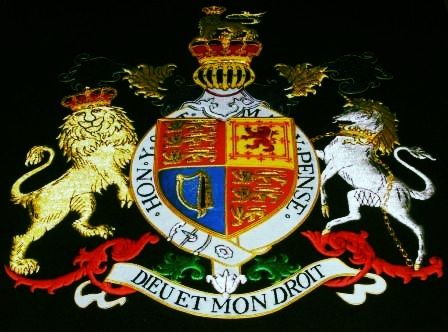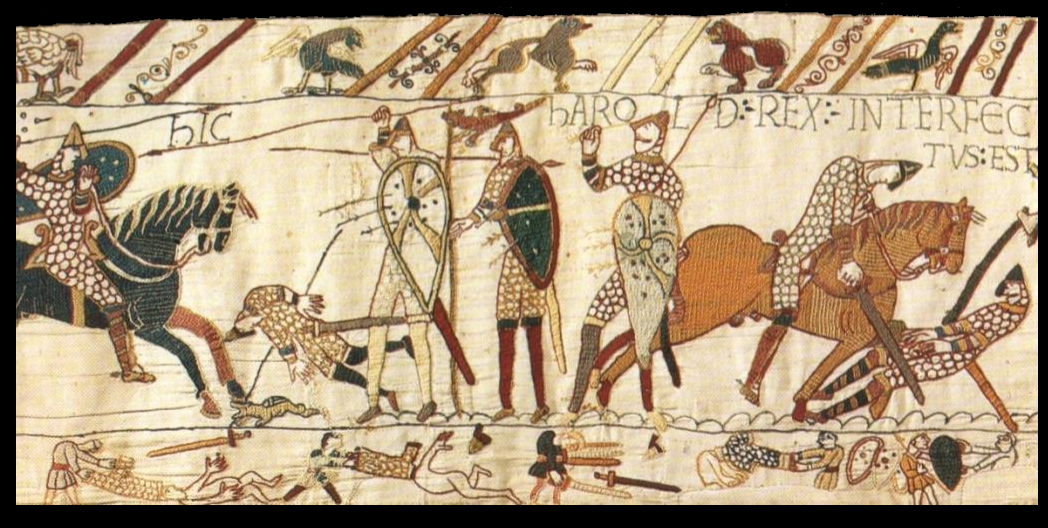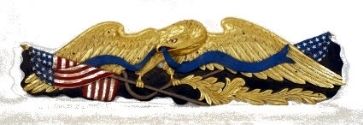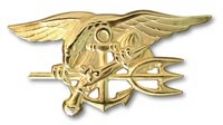Skip to comments.
Today In History - Battle of Hastings - 14 October 1066
BritishBatles.com ^
Posted on 10/14/2014 5:24:26 PM PDT by ConorMacNessa

TODAY IN HISTORY

Bayeux Tapestry – Battle of Hastings
The Death of King Harold
From British Battles.com:
"The Battle of Hastings – 14 October 1066
Account:
William, Duke of Normandy, launched his bloody and decisive invasion of Saxon England in 1066. In that year Edward the Confessor, King of England, died without heir, appointing by his will Harold Godwinsson, son of England’s most powerful nobleman, the Earl of Wessex, as his successor. Across the Channel, William of Normandy considered himself rightfully the next King of England, basing his claim on a promise by Edward the Confessor in the early 1050s and an oath of fealty sworn by Harold during an enforced visit to William’s capital at Rouen following his capture by the Count of Ponthieu.
Succeeding to the dukedom of Normandy as a bastard child of Duke Robert, William devoted his early adult life to enforcing his authority in a succession of ruthless campaigns, meanwhile building his dukedom into a fearsome mini-state, efficient both administratively and militarily.
In the summer of 1066 William assembled an army of noblemen and adventurers from across Northern France to invade England, promising lands and titles in his new kingdom to his followers and obtaining the support of the Pope for the venture.
A fleet of around 1,000 vessels, designed in the style of the old Norse “Dragon Ships” (80 feet long; propelled by oars and a single sail), was built and assembled to convey the army across the Channel.
Among the fighting knights of Northern France who joined William were Eustace, Count of Boulogne, Charles Martel, Roger de Beaumont and Roger de Montgomerie. The clergy was well represented; among them Odo, Bishop of Bayeux, William’s half brother, and a monk René who brought twenty fighting men and a ship, in the expectation of a bishopric in England. Robert le Blount commanded the fleet.
It was no secret that William intended to invade England. He had sent an insulting demand that Harold pay him homage and the gathering of the troops and ships had northern France in turmoil, causing Harold to assemble a powerful army along the Sussex coast in defence.
William’s fleet lay ready to cross the Channel, after being held in port for the duration of the summer by contrary winds, when Harold received the news that a Norwegian army led by King Harald Hadrada with Harold’s renegade brother Tostig had landed in Yorkshire after sailing up the Ouse.
Harold marched his army north and routed the invaders at the battle of Stamford Bridge, in which both Harald Hadrada and Tostig were killed.
The timing could not have been worse for the Saxons. The winds changed and William’s fleet crossed the Channel, landing on the Saxon coast unopposed on 28th September 1066.
Harold received the news of the Norman landing in York soon after his triumph over the Norse invaders and determined to march south immediately to do battle with William.
Harald Hadrada’s army had been nearly annihilated in the savage fighting at Stamford Bridge but the Saxons had suffered significant losses. The King’s brother, Earl Gurth, urged a delay while further forces were assembled but Harold was determined to show his country that their new king could be relied upon to defend the realm decisively against every invader.
Safely landed at Pevensey Bay, William built a fortification and then moved further east to Hastings; his troops ravaging the countryside which was known to be part of Harold’s personal earldom.
The Saxon army arrived in the area on 13th October 1066 and established a position on a hill north west of Hastings, known subsequently as Senlac (sang lac or lake of blood); putting up a rough fence of sharpened stakes along his line, fronted by a ditch. Harold issued orders as compelling as he could make them that, when throughout the battle, his army was not to move from this position, whatever the provocation.
Early on 14th October 1066 William moved forward with his army to attack the Saxon position, the Normans in the centre flanked on the left by the Bretons and on the right by the rest of the French.
The battle was fought over the rest of the day, a savage fight with heavy casualties on each side. The issue in the balance until late in the afternoon; marked by repeated cavalry attacks on the Saxon position by William’s cavalry, violently repelled until the final assaults. The Normans found the Saxon warriors with their battle axes, and in particular Harold’s “housecarles”, a formidable enemy. There were many accounts of knights with their horses being hacked in pieces by these terrible weapons wielded in great swinging blows.
At around midday an assault developed on the Saxon camp causing a section of Harold’s line to retreat in confusion. Reaching the top of an incline the Saxons turned on the pursuing Normans, held up by a ditch across their front, and drove them back with considerable loss.
In the early afternoon William’s left flank of Bretons gave way, to be pursued down the hill by the fyrd they had been attacking. This break in the line, that Harold had so adamantly warned against, gave the Normans the opportunity to break into the Saxon position at the top of the slope. The incessant Norman attacks began to break up Harold’s army; the barrage of arrows taking a heavy toll, in particular wounding Harold in the eye
During the course of the battle William had three horses killed under him and was forced to ride round the field, his head bared, to reassure his army that he was unhurt; assisted by his half-brother Odo, Bishop of Bayeux, in rallying the Norman soldiers.
A particularly savage fight developed around the position held by the now severely wounded Harold and his royal housecarles. Finally the Saxon King was killed, followed by his brothers, Earl Gurth and Earl Leofwin, and the remaining housecarles.
It was late afternoon and much of the remnants of the Saxon army gave way, fleeing the field; although a significant force continued to fight. The battle finally ended with all the remaining Saxons killed.
The heaped bodies were cleared from the centre of the battlefield, William’s tent pitched and a celebratory dinner held.
Casualties:
The figures are unknown but were heavy for the Normans and disastrous for the Saxons.
Follow-up:
It was some time before Saxon England acknowledged William as king. William was forced to march to the West and cross the Thames at Wallingford in Oxfordshire before circling round from the North and capturing London, devastating the countryside as he marched. The Tower of London was the first of the castles William built to dominate and subjugate England. William was finally crowned in Westminster Abbey on Christmas Day 1066 by the Saxon Archbishop, Aldred of York.
In March 1067 William returned to Normandy, leaving Odo, Bishop of Bayeux, to continue the process of building castles and subjugating the population. William only returned to England on four further occasions.
William the Conqueror died following the capture of Mantes in 1087, leaving England to be ruled by William II and Normandy by his eldest son Robert.
Probably only 20,000 Normans and other Frenchmen came to England as a result of the Conquest. Nevertheless the Saxon country was transformed, French becoming the language of administration and government and the Conqueror’s followers displacing the native nobility. The Saxons lamented their lost freedom for two centuries while England now looked across the Channel for cultural and political inspiration.
Conquest in France remained the obsession of the Frankish kings of England until the 16th Century. French names predominated among the nobility and the military classes; doubtless the Montgomery leading the British armies in the Second World War was a descendant of the Roger de Montgomerie who fought for the Conqueror.
The Bayeux Tapestry:
A remarkable feature of the Norman Conquest was its near-contemporaneous record in the Bayeux Tapestry; strictly a work of embroidery rather than tapestry (being embroidered on cloth rather than woven into it). The origins of the tapestry, lodged in Bayeux Cathedral, are uncertain; perhaps executed at the direction of William’s wife Matilda or by seamstresses in England at the direction of Odo, Bishop of Bayeux, and, after the Conquest, Earl of Kent, and given to the Cathedral at Bayeux by its bishop. |
|
|
|








"Riamh nár dhruid ó sbairn lann!"
Genuflectimus non ad principem sed ad Principem Pacis!
Listen, O isles, unto me; and hearken, ye people, from far; The LORD hath called me from the womb; from the bowels of my mother hath he made mention of my name. (Isaiah 49:1 KJV)
TOPICS: Culture/Society; United Kingdom
KEYWORDS: 1066; battleofhastings; battleofsenlac; bayeuxtapestry; england; haroldgodwinson; haroldii; hastings; kingharoldii; normans
Navigation: use the links below to view more comments.
first previous 1-20, 21-40, 41-43 next last
To: ConorMacNessa
Learning history as a series of dates doesn’t really interest most students. We must take a more tongue in cheek assesment of things as they are recalled by those took the course. “1066 And All That: A Memorable History of England, Comprising All the Parts You Can Remember, Including 103 Good Things, 5 Bad Kings, and 2 Genuine Dates” by Walter Carruthers Sellar, Robert Julian Yeatman, John Reynolds(Illustrator)(first published in the 1930s) is just such a tome. I first read this book sometime in 1950-60s and just reread it last month. A truly enjoyable repeat.
21
posted on
10/14/2014 6:07:23 PM PDT
by
Nuocmam
To: matginzac
I’d like the story to be centered on England such as it was. William himself could be seen behind his helm during all scenes instead of a major actor. Harold’s short reign including quashing of the northern revolts and then turning south to face William, then taking an arrow in the eye before being dismembered. Totally fascinating political chaos with a spectacular ending with the crowning of a bastard king.
22
posted on
10/14/2014 6:10:02 PM PDT
by
Textide
(Lord, grant that I may always be right, for thou knowest I am hard to turn. ~ Scotch-Irish prayer)
To: ConorMacNessa
Harold was the rightful king of England.
William the Bastard LIED. When Harold was in his power, he was forced by William to take the Oath on Holy Relics. An oath extracted under threats, even tacit ones, are not binding.
Unlike Achilles, he wouldn’t even turn over Harold’s remains to u is grieving family.
There is no tomb over the grave of Harold Godwinsson, true King of England.
The only good to come out of that battle was the Plantagenets,
England’s greatest kings.
23
posted on
10/14/2014 6:24:15 PM PDT
by
ZULU
(https://www.youtube.com/watch?v=8qLDFiQcjlY Impeach Obama in 2015 !!!)
To: ConorMacNessa
Trivia. The Norman Cavalry were steady because they were the first to use stirrups attached to their saddles which gave them a tactical advantage over the Saxons.
To: vetvetdoug
Trivia? On such things the fate of nations hangs! The Romans had an exquisitely designed weapon - the pilum - which, properly used, rendered the enemy's shields more an encumbrance than an aid. Out of such trivialities history is made.
 |
 |

America demands Justice for the Fallen of Benghazi! |
 |
 |
O stranger, tell the Lacedaemonians that we lie here, obedient to their command.
Listen, O isles, unto me; and hearken, ye people, from far; The LORD hath called me from the womb; from the bowels of my mother hath he made mention of my name. (Isaiah 49:1 KJV)
25
posted on
10/14/2014 6:41:14 PM PDT
by
ConorMacNessa
(HM/2 USN, 3/5 Marines RVN 1969 - St. Michael the Archangel, defend us in Battle!)
To: ConorMacNessa
The Normans (Northmen) were basically of the same blood as the Angles and Saxons; they spoke French because of where they lived. The Battle of Hastings was the last successful invasion of England until the British elected representatives allowed in an invasion of Muslims.
26
posted on
10/14/2014 6:44:43 PM PDT
by
odawg
To: ConorMacNessa
Thanks,Conor, for the info on the Battle of Hastings. Learned a lot.
27
posted on
10/14/2014 6:49:51 PM PDT
by
exit82
("The Taliban is on the inside of the building" E. Nordstrom 10-10-12)
To: odawg
Bingo on both points, Odawg! Three successive invasions of the Island Kingdom by the Anglo-Saxons, the Danes, and the Normans, who were of the same or closely related stock. Who became a unified people and defended their island from invasion for a millennium. Those ancient defenders must be turning cartwheels in their graves over the abject capitulation of their descendants and countrymen to the Moslem invasion.
 |
 |

America demands Justice for the Fallen of Benghazi! |
 |
 |
O stranger, tell the Lacedaemonians that we lie here, obedient to their command.
Listen, O isles, unto me; and hearken, ye people, from far; The LORD hath called me from the womb; from the bowels of my mother hath he made mention of my name. (Isaiah 49:1 KJV)
28
posted on
10/14/2014 7:01:22 PM PDT
by
ConorMacNessa
(HM/2 USN, 3/5 Marines RVN 1969 - St. Michael the Archangel, defend us in Battle!)
To: ZULU
Some of us commemorate today as the Feast of St. Harold, Last Orthodox King of England, and those with him.
There is an argument, generally accepted by very traditional Russian Orthodox Christians and by English-speaking Orthodox Christians, that England, and in general the British Isles, remained Orthodox until their local churches were brought under papal rule by the Normans. The English church had been out of communion with Rome over an investiture issue at the time of the mutual anathemas in 1054. The Saxon coronation rite used to crown Harold Godwinson used the Creed in its original form, without the filioque. The Normans invaded with a papal blessing to reduce the English church to obedience to the Roman Papacy. And, finally, most Saxon nobility who fled the Norman invasion went not to Latin Europe, but to Constantinople, where many took service in the Varangian Guard, or to Kiev, including St. Harold’s daughter, who married Prince Vladimir Monomakh.
29
posted on
10/14/2014 7:03:03 PM PDT
by
The_Reader_David
(And when they behead your own people in the wars which are to come, then you will know...)
To: SES1066
As you point out, all the contenders for the crown of England were descendants of the leaders of an earlier generation of Viking conquests. In the short run, if you were an average resident of England, not much changed other than names of the rulers.
However, in the long run ...
If William the Conqueror and his descendents were not viewed to some extent as “outsiders”, would the Noblemen have risen up and forced the king to sign the Magna Carta in 1215, a document that distinquished British monarchy (ever so slightly at first) from the absolute monarchy that was prevalent on the continent?
If the England wasn’t ruled by the Plantagenet family who had ties to both England and continental France, would the set of conflicts alliances have played out that resulted in the Hundred Years War and the creation of France as a great nation?
Would the blowback from the loss of the Hundred Years War have caused the War of the Roses, which ended with Tudors on the throne of England, including the unique personalities of Henry VIII and Elizabeth I?
Would we here in America be speaking English and governing ourselves the way that we do, if Harold had taken his brothers advice and waited for reinforcements on October 14, 1066?
Perhaps history would have played similarly with just the names and faces changed, but perhaps we would be living in quite a different world.
To: Textide
So cool!
Though I see your point, I think his struggle for dominance in Normandy, his winning of Mathilda and his claim to the throne need to be established then followed by the conquest, submission and his lasting influence in England.
His life story is epic...especially for the eleventh century.
To: Fiji Hill
I’m sure the kids emerging from our schools know little about this or other events in history.
Years ago the New York Times had a section for New Yorkers to write about their day in the city. One New Yorker wrote approximately: “ I was at my local grocery store and when they rang up my groceries the girl said the total was 10.66.
I replied, “The Battle of Hastings.” In response I got a blank look. So I repeated, “The Battle of Hastings, 1066.” The blank look continued. So I explained that an important historical event happened in the year 1066.
She gave me my change and then said, “Can you do that for every year?”
32
posted on
10/14/2014 7:15:46 PM PDT
by
ladyjane
To: CaptainMorgantown
33
posted on
10/14/2014 7:43:51 PM PDT
by
Inyo-Mono
(NRA)
To: CaptainMorgantown
If William the Conqueror and his descendents were not viewed to some extent as “outsiders”, would the Noblemen have risen up and forced the king to sign the Magna Carta in 1215, a document that distinquished British monarchy (ever so slightly at first) from the absolute monarchy that was prevalent on the continent? Also, there was the 1100 Charter of Liberties which says death taxes and writing laws which exempted the lawmakers was "evil and oppressive". Many scholars believe violations of the 1100 Charter of Liberties led to the Magna Carta.
34
posted on
10/14/2014 7:50:35 PM PDT
by
DocRock
(All they that TAKE the sword shall perish with the sword. Matthew 26:52 Gun grabbers beware.)
To: ConorMacNessa
35
posted on
10/14/2014 8:25:12 PM PDT
by
spodefly
(This is my tag line. There are many like it, but this one is mine.)
To: The_Reader_David
36
posted on
10/14/2014 9:07:30 PM PDT
by
ZULU
(https://www.youtube.com/watch?v=8qLDFiQcjlY Impeach Obama in 2015 !!!)
To: vetvetdoug
William the Bastard almost lost. If Harald had only waited for the rest of his army from Stamford he would have won. Even without it had the shield wall held its position and not been lured out and had he not been shot with the arrow,he might have won anyway.
A well-disciplined well trained infantry force can usually hold off any cavalry unless they are horse archers which the Normans were not.
37
posted on
10/14/2014 9:23:23 PM PDT
by
ZULU
(https://www.youtube.com/watch?v=8qLDFiQcjlY Impeach Obama in 2015 !!!)
To: BatGuano
Saw the death effigy from Eleanor of Aquitaine’s sarcophagus in New York at the Museum of Art. It was awesome. Would like to visit Normandy and Anjou the home of the loddly Plantagenets.
38
posted on
10/14/2014 9:29:19 PM PDT
by
ZULU
(https://www.youtube.com/watch?v=8qLDFiQcjlY Impeach Obama in 2015 !!!)
To: ZULU
If Harald had only waited for the rest of his army from Stamford he would have won. Even without it had the shield wall held its position and not been lured out and had he not been shot with the arrow,he might have won anyway I will cut the guy some slack. He had just force-marched his army to the north to repel another major invasion (in a victory which ended the "Age of The Vikings"), and then had to immediately turn his forces south again and confront the largest maritime assault ever assembled. Actually, he did this after having just defeated the previous largest-ever-assembled armada.
To: matginzac
He’s a very controversial character even now, but yes it would be a good idea. He’d make an excellent anti-hero.
40
posted on
10/15/2014 3:55:48 AM PDT
by
Vanders9
Navigation: use the links below to view more comments.
first previous 1-20, 21-40, 41-43 next last
Disclaimer:
Opinions posted on Free Republic are those of the individual
posters and do not necessarily represent the opinion of Free Republic or its
management. All materials posted herein are protected by copyright law and the
exemption for fair use of copyrighted works.
FreeRepublic.com is powered by software copyright 2000-2008 John Robinson

















